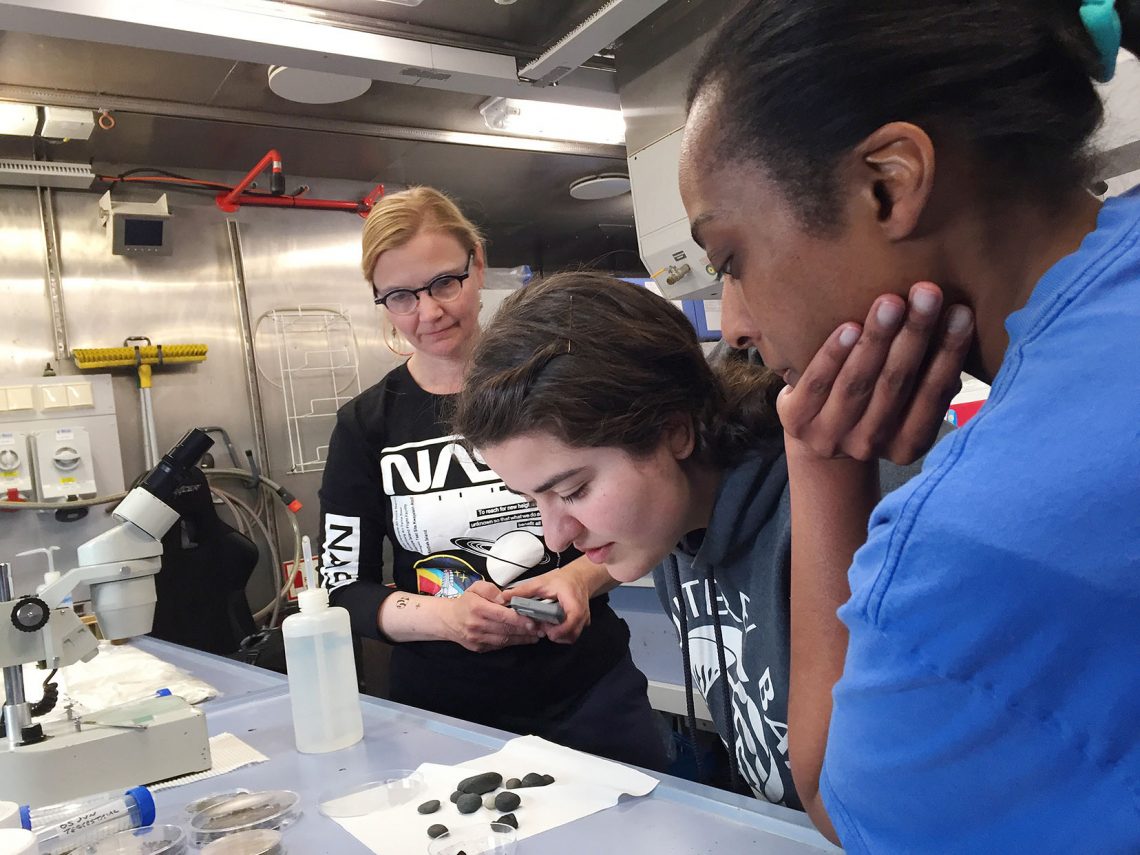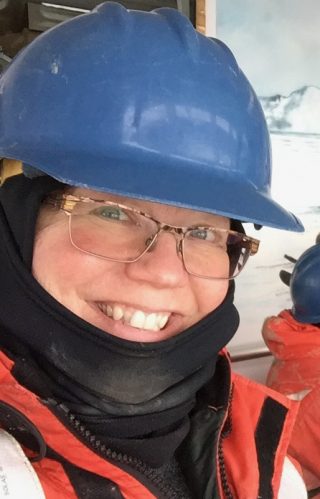Overnight, the ‘star sieve’ returned several hundred grams of rocky material with characteristics similar to what we are looking for in meteorites – black-colored rocks with a smooth exterior surface. But when ALL of the samples from multiple sites look that way, you have either hit the jackpot or something else is going on.
Most scientific investigations start with observation, which when coupled with knowledge, experience, and standardized methods, allow us to draw conclusions about what we are observing. The hard part is to not allow expectation to cloud what we observe in order to achieve an expectation.
Close visual examination revealed that the copious bounty of dark rocks are from a local source, which is the disappointing but unsurprising answer. But after a couple days of peering through clouds of mucknificence, finding rocks that look like meteorites requires a stalwart commitment to objective observation, to persistence, and to remaining upbeat in the face of possibly not finding the prize we are seeking.
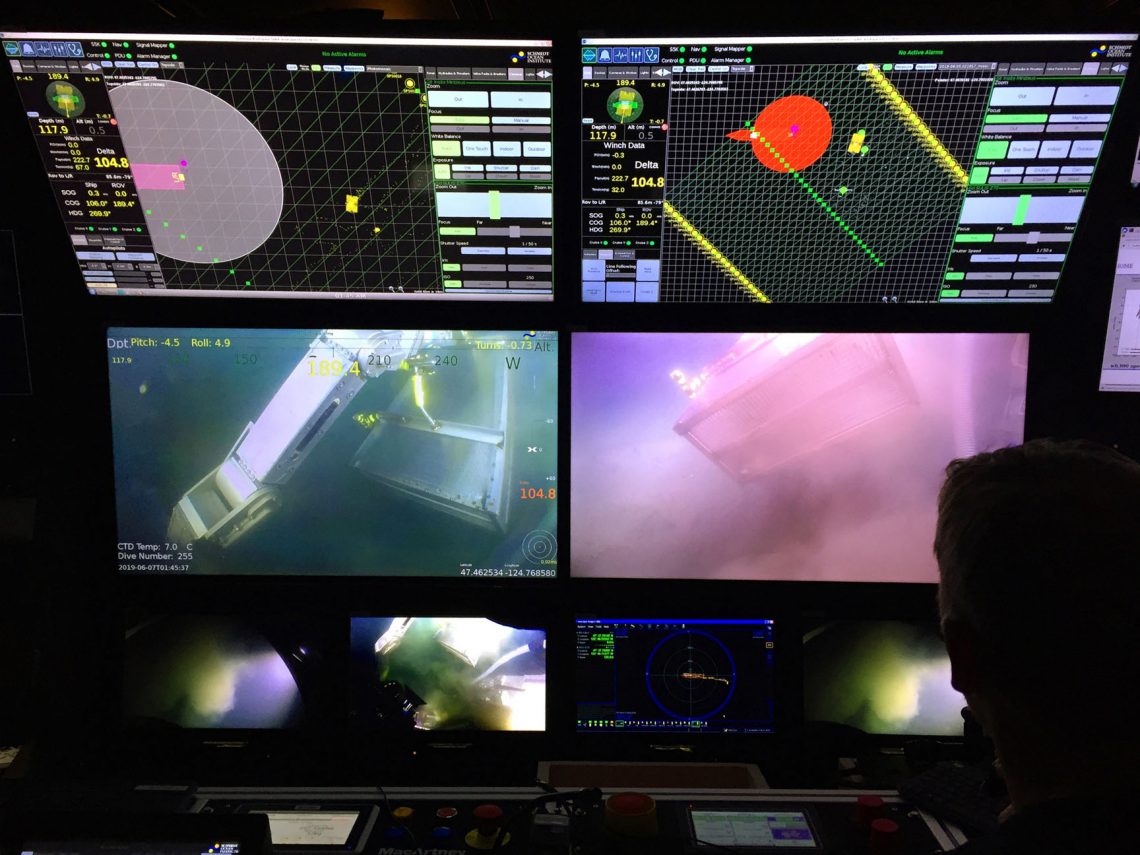
A Change in Tactics
With just a few hours left and much ground left to cover, the scientists and ROV pilots devise a new strategy. The R/V Falkor sets a course back to the area where the largest meteorites may have landed. The plan is to systematically “mow-the-lawn,” looking for impact features or large rocks begging to be found.
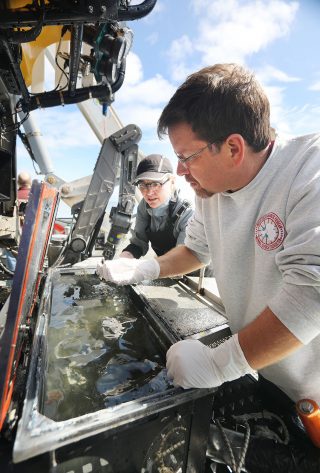
So finding lots of rocks that look like meteorites must be put into perspective, not only allowing us to better recognize when we do find one, but to provide the opportunity to tell a different if equally compelling story. One of those stories may be about the history of the seafloor, but for the Seeking Space Rocks, team, this search and the non-meteorite materials we recover may help others to find ways of identifying life on another planet!
The Seeking Space Rocks science team includes not only NASA scientists who study the origin and history of the solar system from meteorites, and NOAA’s research coordinator from Olympic Coast National Marine Sanctuary, but other scientists who were interested in the associated interaction of the extraterrestrial materials with life on earth. Scientists from the Laboratory of Agnostic Biosignatures are developing tools and techniques that will allow them to detect life beyond earth.
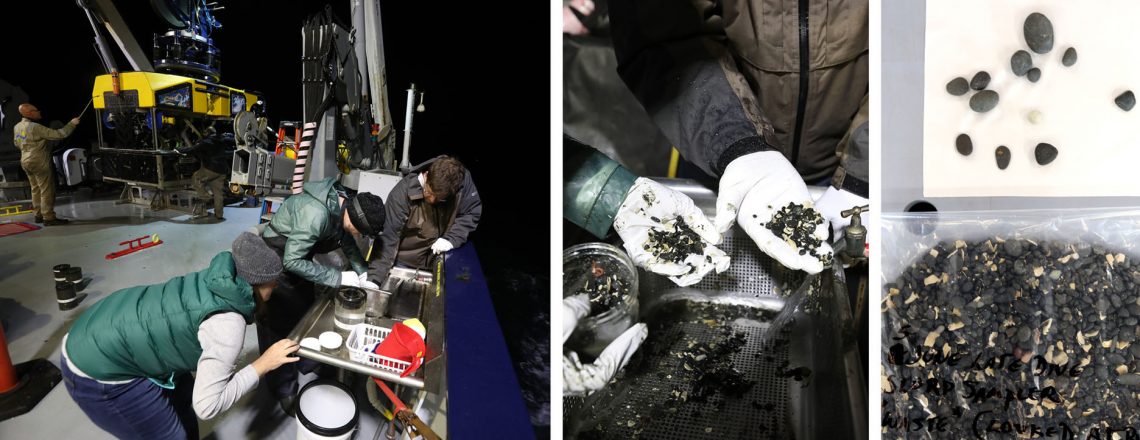
Wrapping Up
As the day comes to a close, the samples are packed up for their journey to laboratories around the country. There may still be, among these treasures from the sea, a meteorite or two. All of the samples will journey yet further to help us better understand worlds beyond our own.
